News Articles
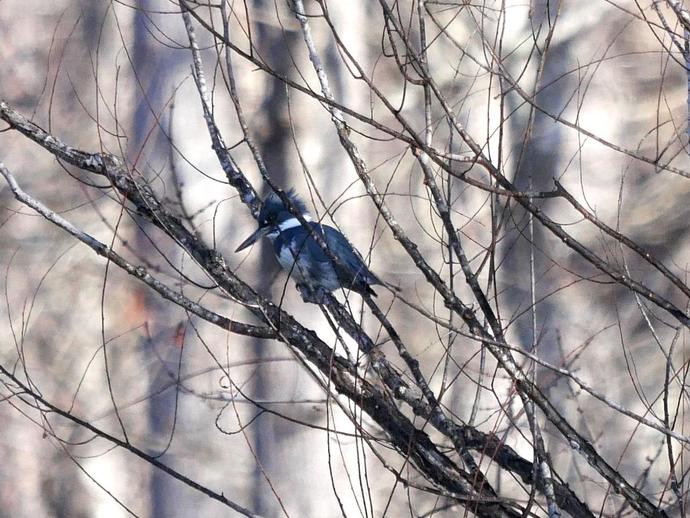
Ben here with another cool find from last week's VMNH Christmas bird count!
December 31, 2020
Ben here with another cool find from last week's VMNH Christmas bird count! We spotted this belted kingfisher (Megaceryle alcyon) at Doe Run Park in Martinsville, and it's a bird I'd been hoping to snap a photo of for quite a while. This particular kingfisher is a male, and it's easy to tell the males and females apart in this species because the females have an additional rusty-colored patch on the breast. Belted kingfishers can most often be seen perched in trees overlooking bodies of water, just like the one in the photograph. They sit at these "watchpoints" studying the water and looking for fish swimming at the surface. When a kingfisher spots a tasty looking fish, it will drop from the tree, plunge head-first into ...
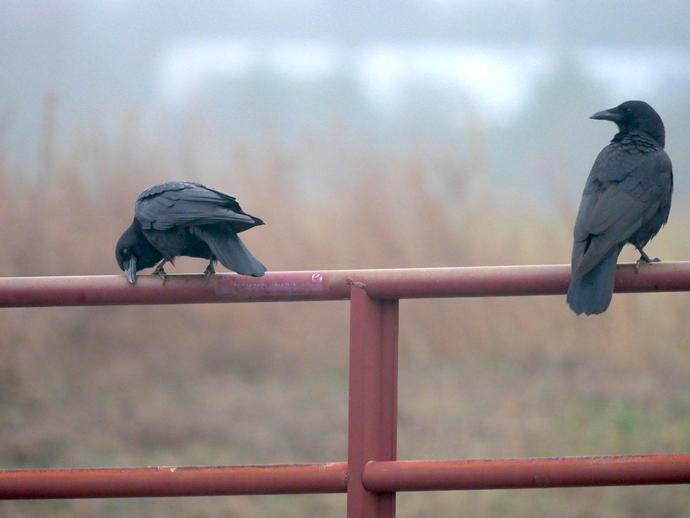
Ben here with another find from last week's VMNH Christmas bird count!
December 30, 2020
Ben here with another find from last week's VMNH Christmas bird count! The American crow (Corvus brachyrhynchos) certainly isn't a rare bird, and unfortunately, many people just don't like crows very much. However, crows are fascinating and intelligent birds that deserve our attention. So just how smart are crows? Believe it or not, studies suggest that in some ways at least, a crow is as smart as a seven-year-old human child, and they might just be the smartest non-primate animal in the world. Crows don't have exactly the same kind of intelligence as humans because they lack a neocortex, which is the part of the brain that humans and primates possess that allows for advanced cognition. Instead, crows (and other members ...
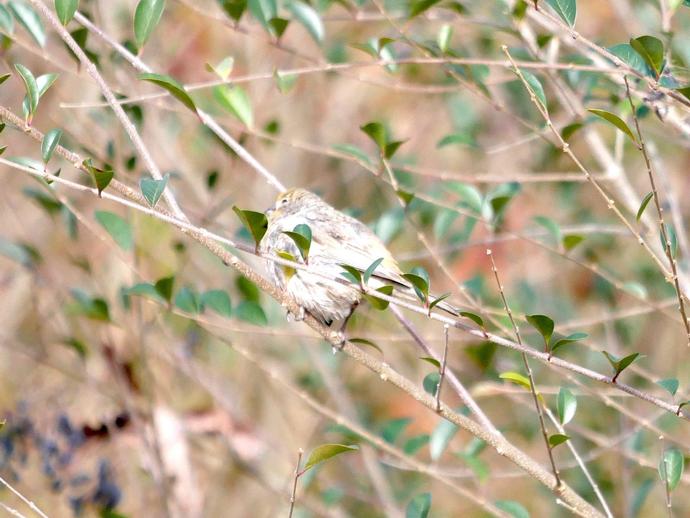
Ben here with day two of the VMNH Christmas bird count round-up!
December 29, 2020
Ben here with day two of the VMNH Christmas bird count round-up! Here's something unusual that the museum crew spotted at Lake Lanier in Martinsville last week: a house finch (Haemorhous mexicanus)! "Now Ben," you are perhaps saying to yourself, "I see house finches all the time, and this strains the definition of 'unusual.'" Normally I would agree, but this isn't a normal house finch! The plumage of male house finches is usually splotched with red, but this house finch has spots of yellow plumage! As it turns out, this does happen from time to time. The reason is that plumage coloration is determined by the foods that these birds eat. The red coloration comes from carotenoids, which are pigments that naturally occur ...
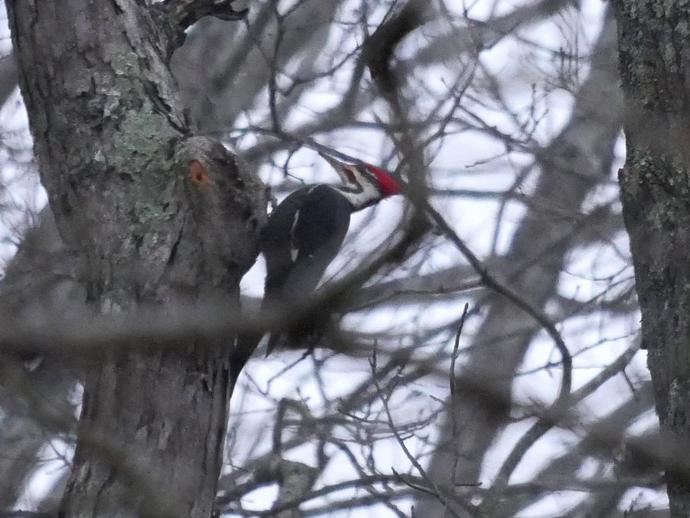
Ben here with the first photo from last Monday's VMNH Christmas bird count!
December 28, 2020
Ben here with the first photo from last Monday's VMNH Christmas bird count! The pileated woodpecker (Dryocopus pileatus) is one of my absolute favorite birds. Unfortunately, the picture isn't great due to a combination of low light and my inherent skills as a photographer, but the pileated woodpecker is cool enough to highlight anyway! Pileated woodpeckers are the largest woodpeckers in the U.S., though are possibly slightly smaller than the ivory-billed woodpecker (Campephilus principalis), which is either critically endangered or more likely extinct. These woodpeckers are about the same size as crows, and they can be recognized by the triangular red crest on the tops of their heads. Unlike some woodpeckers, the females ...
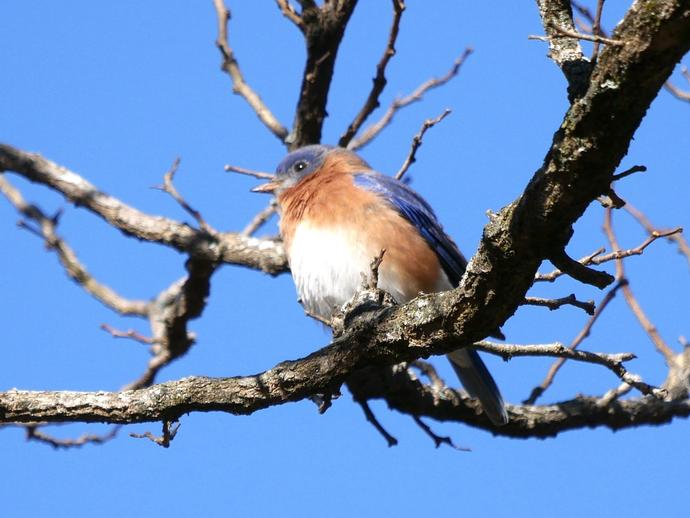
Hi folks, this is VMNH Administrator of Science Ben Williams!
December 28, 2020
Hi folks, this is VMNH Administrator of Science Ben Williams! Last Monday, I joined several of my VMNH colleagues for our annual Christmas bird count. This eastern bluebird (Sialia sialis) is just one of 50 different species we spotted, and today through Friday, all of my nature posts will feature my favorite birds that I photographed during the count! So what exactly is the Christmas bird count? According to VMNH Curator Emeritus of Geology and Walking Bird Encyclopedia Dr. Jim Beard, back in the 1800s and earlier, there used to be a very strange American tradition: on the day after Christmas, people would go out and shoot as many birds as they could find. Fortunately, about a century ago, The Audubon Society proposed a ...
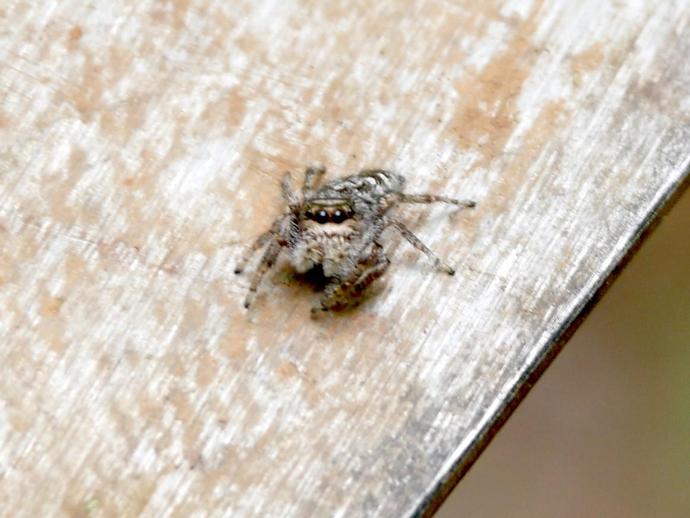
We're reaching into the archives for today's #BenInNature update!
December 27, 2020
We're reaching into the archives for today's #BenInNature update! The following post was originally published on May 4, 2020. Call me crazy (and many have), but I've always thought jumping spiders are kind of cute. Maybe it's their two big eyes (out of their eight total), or maybe it's the fact that their chelicerae look like fuzzy mustaches, or maybe it's the fact that they're inquisitive and angle themselves to look at you. Whatever the case, jumping spiders deserve far more love than they receive. This particular jumping spider is Platycryptus undatus, commonly called the tan jumping spider. Unfortunately, I didn't have my macro lens with me when I spotted it, so you'll have to forgive the quality of the pictures. ...
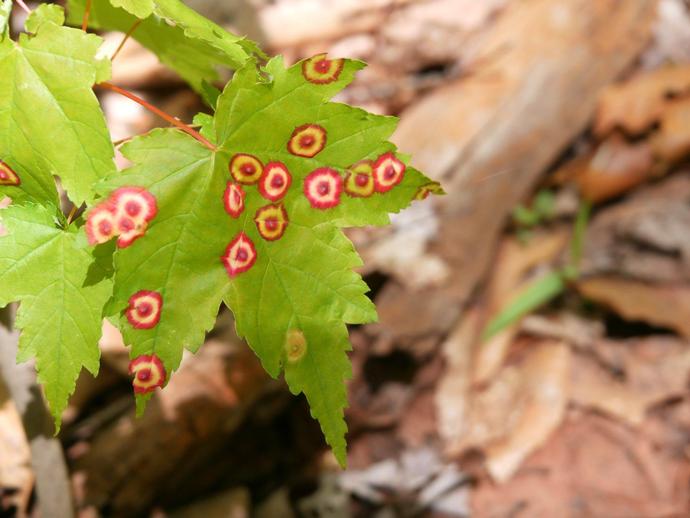
We're reaching into the archives for today's #BenInNature update!
December 26, 2020
We're reaching into the archives for today's #BenInNature update! The following post was originally published on May 3, 2020. When I first saw these unusual splotches on a maple leaf, I assumed it was some kind of fungus (and I also had a weird urge to play darts). In fact, this is the work of an insect. The ocellate gall midge (Acericecis ocellaris), also known as the maple eyespot gall midge, is a tiny mosquito-like fly. It lays its eggs on the underside of red maple leaves, and ONLY red maple leaves -- no other tree will do. The midge larva creates a chemical reaction in the leaf that causes a strange "eyespot" to form around it. If you zoom in very closely, you can see a raised tip at the center of each eyespot; the ...
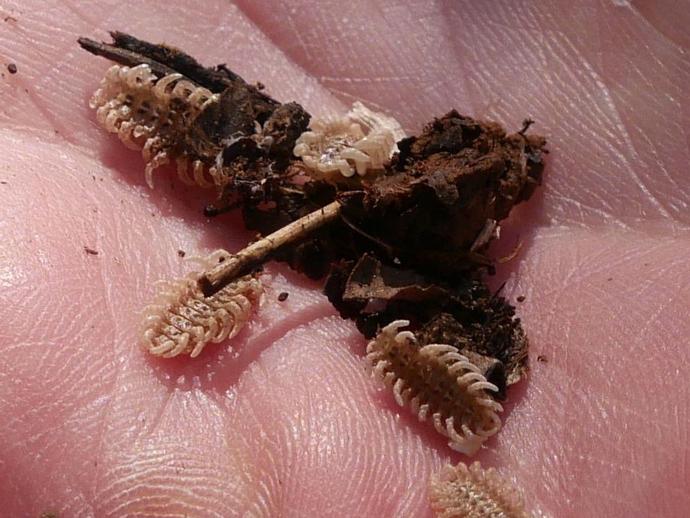
Ben is taking a well-deserved holiday vacation ...
December 25, 2020
Ben is taking a well-deserved holiday vacation, so we're reaching into the archives for today's #BenInNature update! The following post was originally published on May 2, 2020. Now here's something unusual you don't see every day! When I first saw these, I thought they were dried-up pillbugs. Fortunately, VMNH Research Technician and millipede expert Dr. Jackson Means told me what they were, as he had encountered them not too long ago himself and was similarly baffled. According to Dr. Means, these are the larvae of Caenia dimidiata, which is a type of net-winged beetle. The adult beetles have broad, feathery antennae and wide orange and black elytra (the hard shell that protects a beetle's flight wings). The little ...
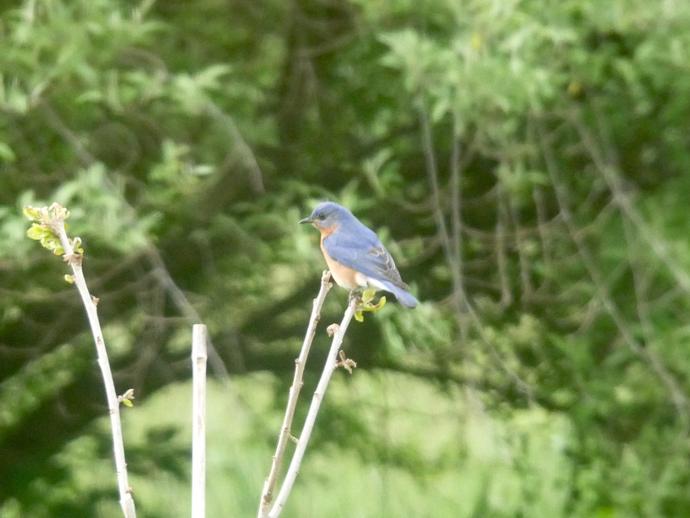
Ben is taking a well-deserved holiday vacation ...
December 24, 2020
Ben is taking a well-deserved holiday vacation, so we're reaching into the archives for today's #BenInNature update! The following post was originally published on April 30, 2020. The eastern bluebird (Sialia sialis), seen here perched on my newly-planted persimmon tree, is one of the great comeback stories of the conservation movement. In the middle of the 20th century, vast amounts of farmland that bluebirds used to call home had been converted into housing and industry, and heavy pesticide use had put the bluebird at even more risk since insects make up a large portion of their diet. To make matters worse, European house sparrows (Passer domesticus) had been introduced to the U.S. in the 1800s in the hope that they ...
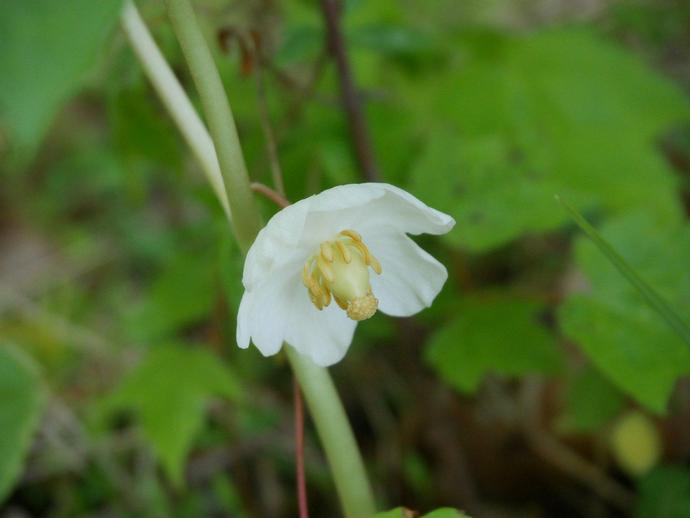
Ben is taking a well-deserved holiday vacation ...
December 23, 2020
Ben is taking a well-deserved holiday vacation, so we're reaching into the archives for today's #BenInNature update! The following post was originally published on April 29, 2020. The mayapple (Podophyllum peltatum), also known as American mandrake and ground lemon, is fairly widespread across the eastern U.S. and southeast Canada. These plants can grow about a foot tall and produce umbrella-like leaves. In the spring, they produce white or yellow flowers (I've also read they can produce red flowers, although I've never seen one myself). By the summer, these flowers turn into a fleshy fruit that can be either green, yellow, or red -- it's like nature's traffic light! From what I've read, all parts of the plant are toxic, ...
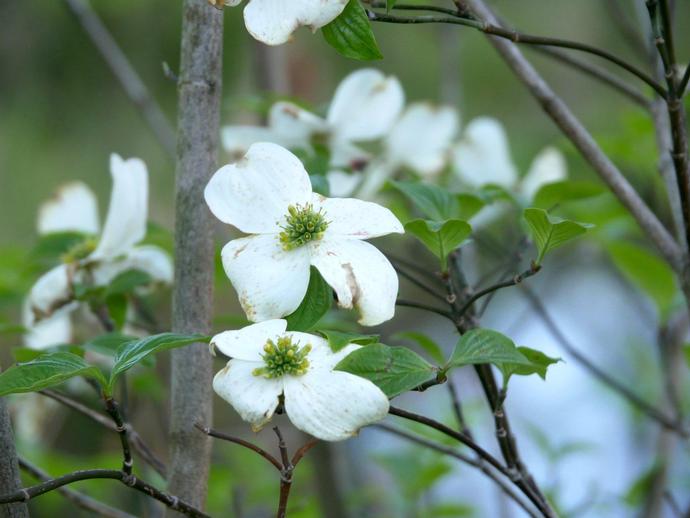
Ben is taking a well-deserved holiday vacation ...
December 22, 2020
Ben is taking a well-deserved holiday vacation, so we're reaching into the archives for today's #BenInNature update! The following post was originally published on April 28, 2020. This tree should certainly be a familiar sight to Virginia residents! The flowering dogwood (Cornus florida) is both the state tree and the state flower of Virginia. Speaking on a strictly technical level, however, the dogwood's flower isn't what we generally think it is. The four white petals aren't petals at all; they're structures called "bracts," which are modified leaves that surround the actual flowers. The flowers themselves are the tiny greenish-yellow things in the center of the bracts. Another example of this is the poinsettia plant; ...
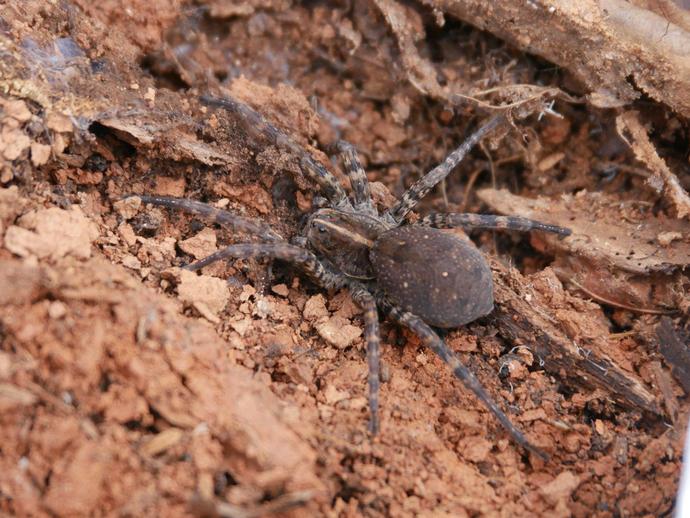
Ben is taking a well-deserved holiday vacation ...
December 21, 2020
Ben is taking a well-deserved holiday vacation, so we're reaching into the archives for today's #BenInNature update! The following post was originally published on April 27, 2020. I realize that a lot of folks don't like spiders, especially enormous spiders presented in close-up photos that highlight every fuzzy leg and beady eye. But like them or not, spiders are fascinating creatures and are well worth examining! According to VMNH Associate Curator of Invertebrate Zoology Dr. Kal Ivanov, this is likely a female Tigrosa georgicola, which is a commonly encountered wolf spider here in Virginia. Wolf spiders are some of the largest spiders you can find in the Commonwealth, rivalled only by Dolomedes tenebrosus, the dark ...
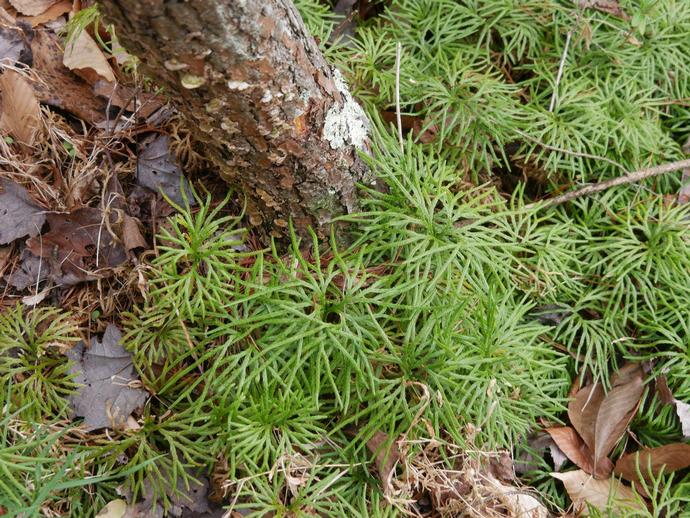
We're reaching into the archives for today's #BenInNature update!
December 20, 2020
We're reaching into the archives for today's #BenInNature update! The following post was originally published on April 26, 2020. You've probably seen this plant before, carpeting the forest floor like some sort of ... carpet. This is Diphasiastrum digitatum, also known as ground cedar or fan clubmoss. Clubmosses like this one are lycopods, which is the oldest surviving division of vascular plants. The earliest lycopod fossils date back more than 400 million years! While the surviving members of the division are all pretty small, ancient lycopods from hundreds of millions of years ago resembled towering trees. If you've ever attended Dragon Festival at the Virginia Museum of Natural History, you're probably familiar with ...
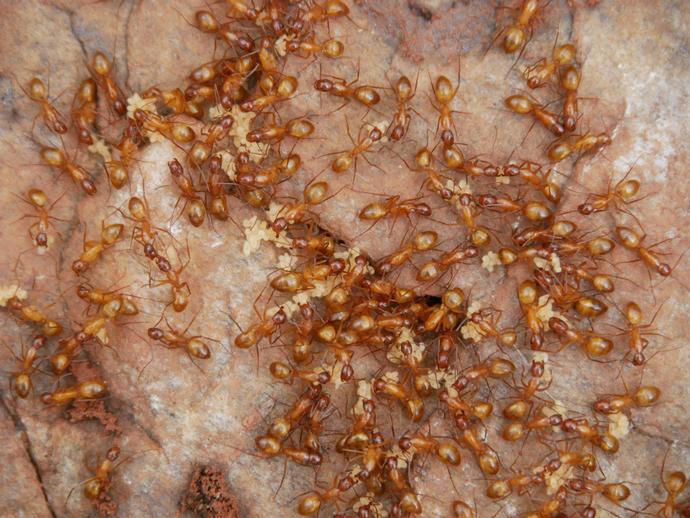
We're reaching into the archives for today's #BenInNature update!
December 19, 2020
We're reaching into the archives for today's #BenInNature update! The following post was originally published on April 25, 2020. I figured I should do a post about ants before our Associate Curator of Entomology Dr. Kal Ivanov stops speaking to me! Dr. Ivanov recently published a paper listing the known ant species of Virginia, and he knows more about ants than ants know about themselves. As such, he quickly identified these guys as Camponotus castaneus, a species of carpenter ant that is widely distributed throughout the eastern U.S. Carpenter ants get their name because they build their nests in dead wood, chewing out elaborate galleries with their mandibles. While termites eat wood, carpenter ants do not; they ...
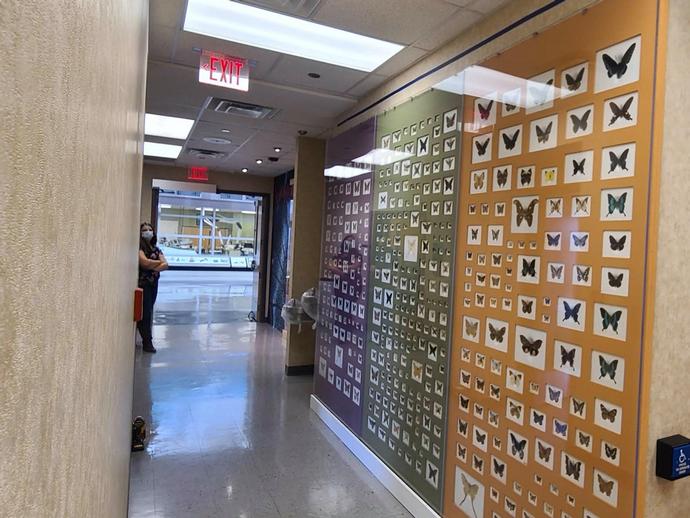
A couple more pics of the museum's upcoming exhibit ...
December 18, 2020
A couple more pics of the museum's upcoming exhibit, "Lepidoptera", which is currently being installed! Lepidoptera is a large insect group that includes moths, butterflies, and their close relatives, the skippers. With approximately 160,000 described species, it is one of the four most species-rich animal orders in the world. The other three - Coleoptera (beetles), Hymenoptera (ants, bees and wasps), and Diptera (flies) - are also insects. The exhibit is scheduled to be completed in Winter 2021 and will feature over 700 specimens from across the world!
Hi folks, Ben here with Friday's #BenInNature update!
December 18, 2020
Hi folks, Ben here with Friday's #BenInNature update! I'm going to take a little time off for the holidays, but I'll be back on Monday, Dec. 28 with brand-new updates, and we'll be sharing nature posts from the archives over the course of the next week. Speaking of blasts from the past, here's a photo and video that I shot during the late summer of a pretty cool little caterpillar: the redbud leaffolder moth Fascista cercerisella. These moths are found in the eastern and midwestern U.S., and the larvae feed exclusively on the leaves of eastern redbud trees (Cercis canadensis). Caterpillars always offer a tasty snack to birds and other predators, and the redbud leaffolder caterpillar has a pretty neat method of avoiding ...
Black bears take the spotlighting in this week's edition of "Museum Minute"!
December 17, 2020
Black bears take the spotlighting in this week's edition of "Museum Minute"! SPECIAL OFFERING! Come join the VMNH education team today (Friday, December 18) for a special activity table inside The Lee & George W. Lester, II How Nature Works gallery focusing on the intriguing lives of black bears! This special offering is included in the cost of general admission and is available any time tomorrow between 10 am and noon, as well as 1 to 3 pm! ABOUT MUSEUM MINUTE "Museum Minute" is a series of weekly videos produced by VMNH educators that highlights specimens and displays residing inside the museum's exhibit galleries.
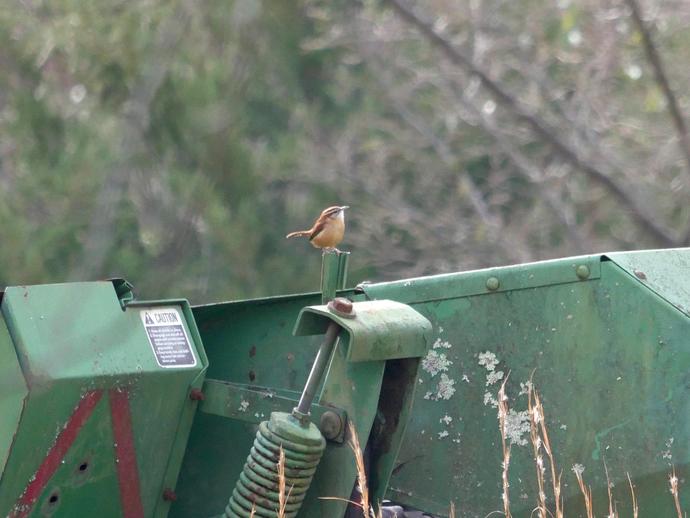
The Carolina wren (Thryothorus ludovicianus) is the only bird licensed to operate heavy machinery
December 17, 2020
The Carolina wren (Thryothorus ludovicianus) is the only bird licensed to operate heavy machinery. OK, that's not true, I just like this particular photo! These wrens are pretty common on the east coast, and they're also the state bird of South Carolina. They're fairly easy to identify based on their white "eyebrows" and rich cinnamon-colored plumage. If you'd like to attract Carolina wrens to your home during the winter, you can't go wrong with a suet feeder. They also like to nest in nesting boxes that contain dried grasses, particularly boxes that have slot-openings rather than round holes. They also like hanging out around brush piles. These wrens are very sensitive to cold weather, and at the northern edge of their ...
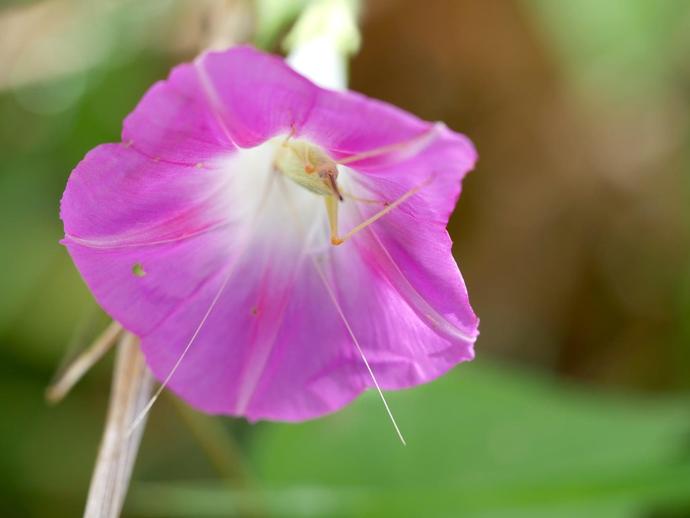
It's looking like the weather is going to be pretty nasty ...
December 16, 2020
It's looking like the weather is going to be pretty nasty, so here's a flower to brighten your day (photo also features bonus insect posterior). Morning glories belong to the family Convolvulaceae, and it's not easy to identify them to species. This is because there are more than 1,000 different species of morning glory belonging to multiple different genera! What most morning glories have in common, however, is the trait that gives them their common name: the flowers tend to untwist themselves into full bloom in the early morning. Morning glories prefer full sun, although there are actually a few species that bloom at night! Morning glories are always a popular choice for gardens because they grow quickly, tolerate poor ...
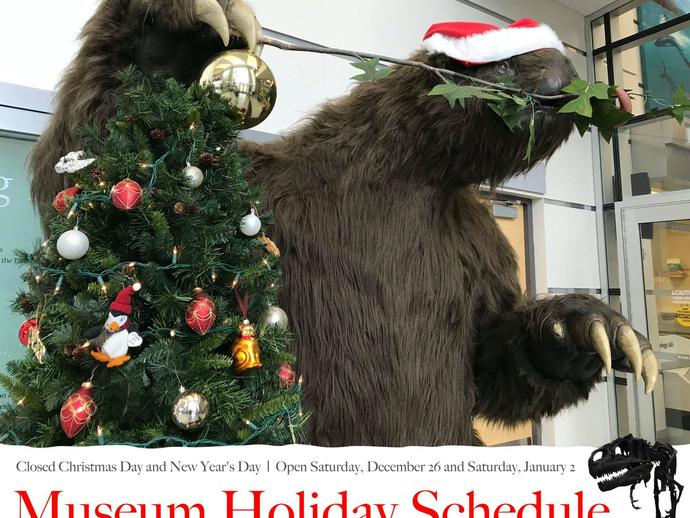
Happy Holidays from everyone at VMNH!
December 15, 2020
Happy Holidays from everyone at VMNH! This holiday season, the museum will be open on Saturday, December 26 and Saturday, January 2 from 9 a.m. to 5 p.m.! The museum will be closed Christmas Day (Friday, December 25) and New Year's Day (Friday, January 1). **Please note that the museum is currently open Fridays and Saturdays from 9 a.m. to 5 p.m and closed all other days. Beginning in January, the museum will be open on Saturdays from 9 a.m. to 5 p.m. and closed all other days.
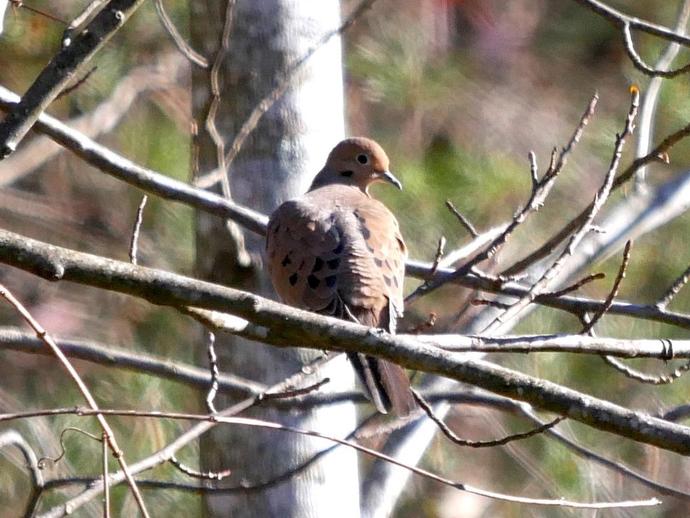
The mourning dove (Zenaida macroura) is the most abundant ...
December 15, 2020
The mourning dove (Zenaida macroura) is the most abundant, widespread game bird in North America, and it's one of the most abundant birds in the entire U.S. It's estimated that there are nearly half a billion mourning doves in North America! On average, dove hunters shoot about 20 million mourning doves per year. While we aren't huge fans of shooting nature here at #BenInNature, the good news is that mourning doves are prolific breeders, although their populations are in a slight decline in parts of the western U.S. If you have mourning doves at your bird feeder (and if you have a bird feeder, you almost certainly have mourning doves), you've probably noticed that they make a loud whistling noise when they take flight. ...
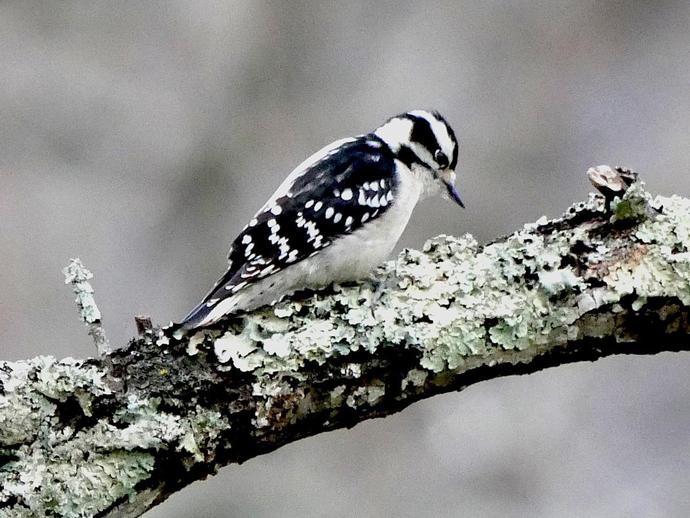
Ben here with the Monday edition of #BenInNature!
December 14, 2020
Ben here with the Monday edition of #BenInNature! The downy woodpecker (Dryobates pubescens) is North America's smallest woodpecker. This one is a female, and it's fairly easy to tell the difference between the males and females of this species: the males have a little red spot on top of their heads while the females do not. However, while it's easy to tell the sexes apart, it's a little harder to tell the difference between this species and the hairy woodpecker (Leuconotopicus villosus). The coloration on both species is extremely similar, but the easiest way to tell the difference is that hairy woodpeckers are a few inches larger and have longer beaks than downy woodpeckers. Downy woodpeckers tend to be about 5-7 inches ...
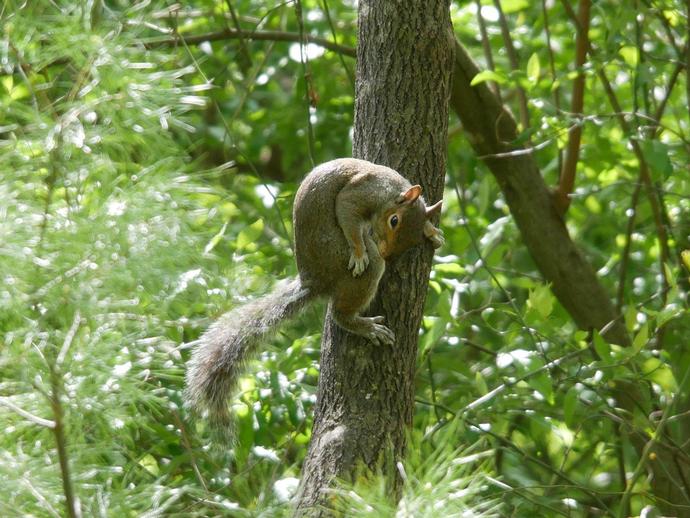
We're reaching into the archives for today's #BenInNature update!
December 13, 2020
We're reaching into the archives for today's #BenInNature update! The following post was originally published on April 24, 2020. Most of the time, animals seem to have an uncanny ability to tell when a camera is in focus and pointed at them, at which point they spring away and disappear. Every once in a while, though, you get lucky and a squirrel strikes a cool pose right in front of you (by the way, please direct all photography awards and corresponding massive cash prizes to Ben Williams c/o The Virginia Museum of Natural History). At any rate, Sciurus carolinensis, better known as the eastern gray squirrel, is a pretty common sight in southwest Virginia. If you have bird feeders, it may be too common of a sight. ...
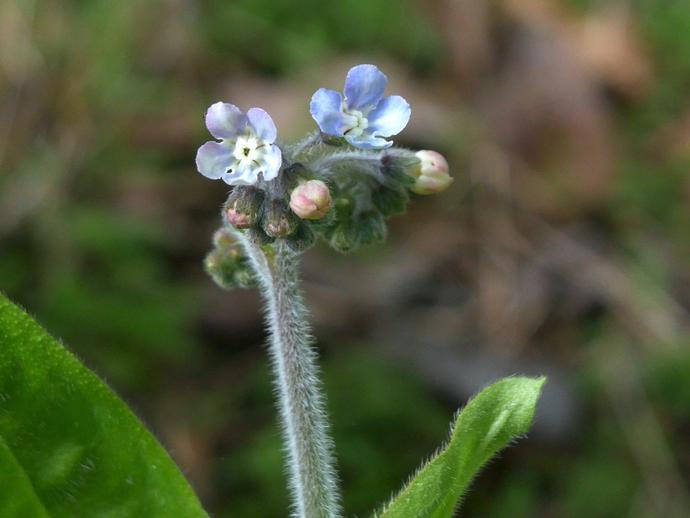
We're reaching into the archives for today's #BenInNature update!
December 12, 2020
We're reaching into the archives for today's #BenInNature update! The following post was originally published on April 23, 2020. The small blue flowers of Cynoglossum virginianum (commonly known as "wild comfrey") are easy to miss, since they're often pretty tiny in comparison to the rest of the plant. The Greek name "Cynoglossum" roughly translates to "dog's tongue," and the plant is sometimes called "blue houndstongue." This is because the size and shape of the leaves bear a striking resemblance to -- you guessed it -- a dog's tongue! This wild plant is native to the eastern U.S. and much of Canada, and it thrives in habitats with high humidity, low temperatures and low competition. For these reasons, forests are a ...
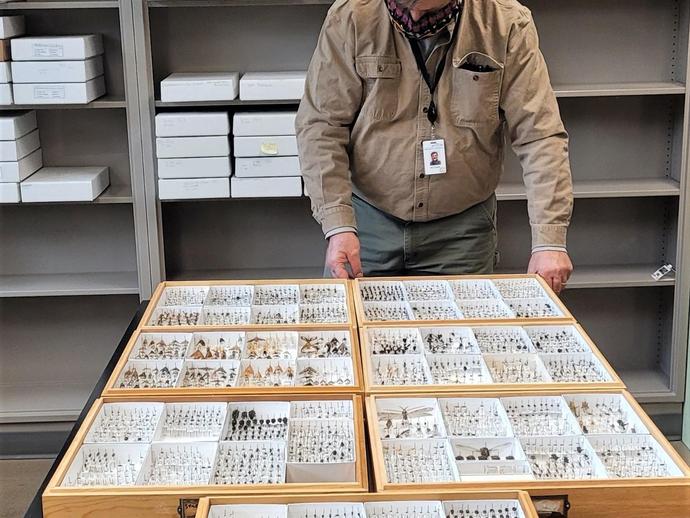
VMNH Research Associate and Board of Trustees member Dr
December 11, 2020
VMNH Research Associate and Board of Trustees member Dr. Art Evans has provided yet another generous donation to the museum's invertebrate collection! In early December, Dr. Evans donated nearly 3,000 pinned insect specimen generated from his work at the James River Park System in Richmond. Insect surveys, such as the one conducted by Dr. Evans, do not only fill in existing gaps in our knowledge of the Commonwealth's invertebrate fauna, but also are critical to future conservation planning and natural resource management. The materials represent 13 different insect orders and include VMNH's first specimens of the Asian Jumping Mantis, Statilia maculata (Thunberg), and the rarely collected, recently described, hover fly ...
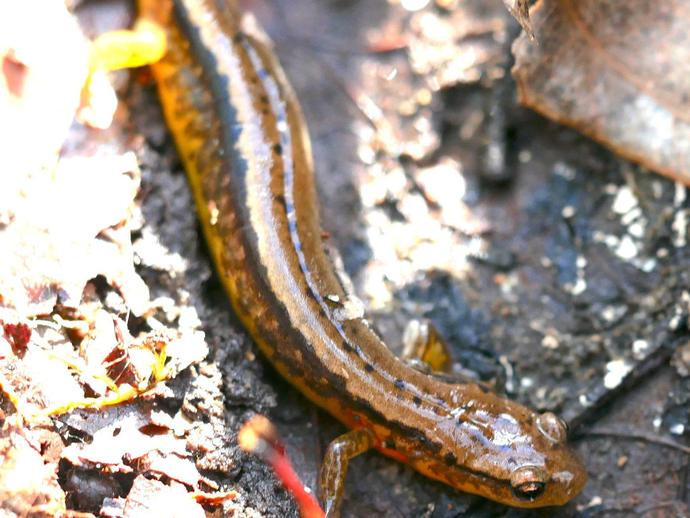
It's time for today's #BenInNature update!
December 11, 2020
It's time for today's #BenInNature update! Here's something a little unusual to close out the week! This is Eurycea cirrigera, better known as the southern two-lined salamander. This salamander can be found pretty commonly in the southeastern United States. What's unusual is that since I started writing these nature posts back in March, I had only found three species of salamander on my property (the Northern red salamander Pseudotriton ruber ruber; the eastern newt Notophthalmus viridescens; and the white-spotted slimy salamander Plethodon cylindraceus). This is the fourth species I've found, and I only found it just a few weeks ago in late November! What does this mean? Probably just that I missed it earlier in the year, ...
The museum's Paleontology Lab ...
December 10, 2020
The museum's Paleontology Lab, viewable from the Harvest Foundation Hall of Ancient Life, takes center stage in this latest episode of "Museum Minute"! SPECIAL OFFERING! Fascinated by fossils? Come join the VMNH education team today (Friday, December 11) for a special activity table inside the museum's Harvest Foundation Hall of Ancient Life focussing on the captivating world of paleontology! This special offering is included in the cost of general admission and is available any time tomorrow between 10 am and noon, as well as 1 to 3 pm! ABOUT MUSEUM MINUTE "Museum Minute" is a series of weekly videos produced by VMNH educators that highlights specimens and displays residing inside the museum's exhibit galleries.
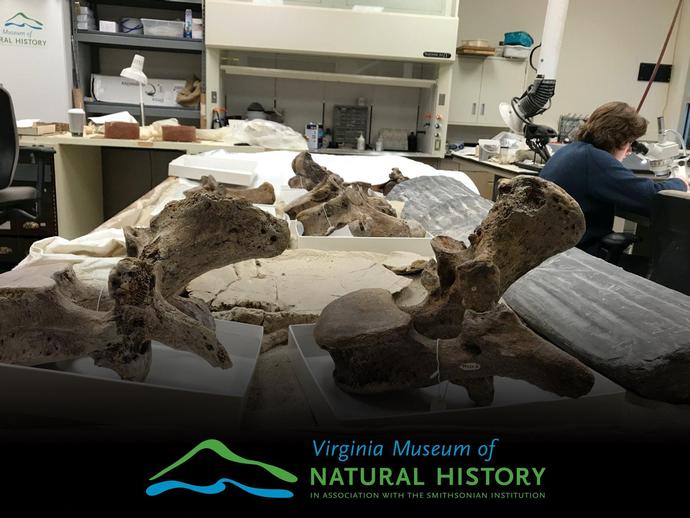
Fascinated by fossils?
December 10, 2020
Fascinated by fossils? Come join the VMNH education team tomorrow (Friday, December 11) for a special activity table inside the museum's Harvest Foundation Hall of Ancient Life focussing on the captivating world of paleontology! This special offering is included in the cost of general admission and is available anytime tomorrow between 10 am and noon, as well as 1 to 3 pm!
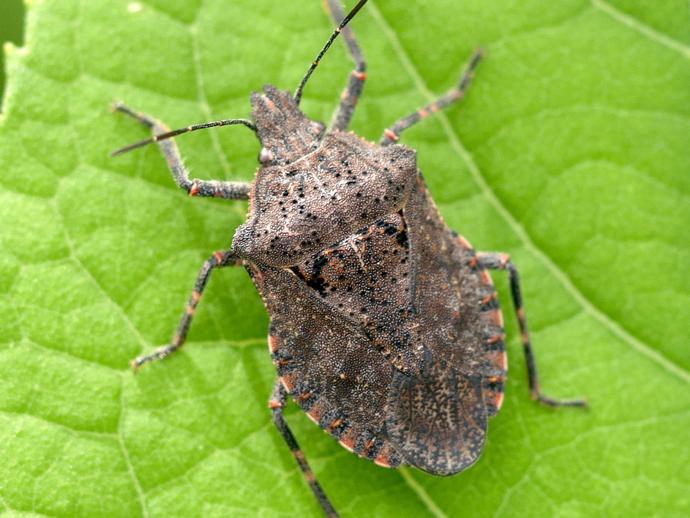
"Jeez Ben ...
December 10, 2020
"Jeez Ben," you are perhaps saying, "I clearly remember that you did a post about brown marmorated stink bugs (Halyomorpha halys) back during the summer. Why are you doing a second one? Don't we have to see them enough?" While I understand that outlook completely, I am here to tell you that this is NOT a brown marmorated stink bug! This is Brochymena quadripustulata, also known as the four-humped stink bug or rough stink bug! This is an incredibly widespread species and can be found not only in North America, but also in Central America and Africa. Like most stink bugs, this species uses its piercing mouthparts to suck the juices from plants. Its gray coloration and pattern allow it to blend in easily with tree bark, ...
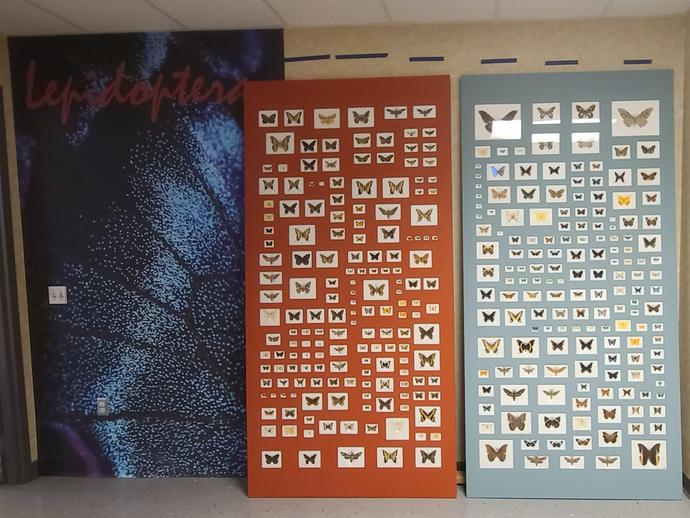
NEW EXHIBIT COMING WINTER 2021: Lepidoptera Lepidoptera is a large insect group that includes ...
December 9, 2020
NEW EXHIBIT COMING WINTER 2021: Lepidoptera Lepidoptera is a large insect group that includes moths, butterflies, and their close relatives, the skippers. With approximately 160,000 described species, it is one of the four most species-rich animal orders in the world. The other three - Coleoptera (beetles), Hymenoptera (ants, bees and wasps), and Diptera (flies) - are also insects. Today, staff are beginning to install the exhibit, "Lepidoptera", which will be found adjacent to the Harvest Foundation Hall of Ancient Life. When complete, the exhibit will feature over 700 specimens from across the world!
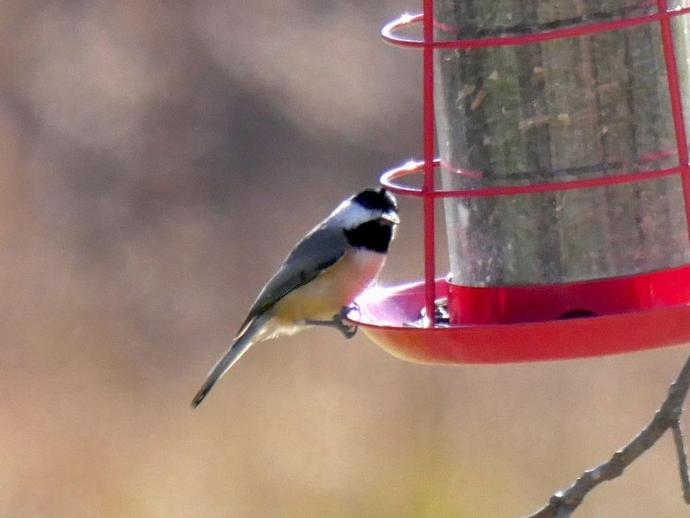
Ben here with the Wednesday edition of #BenInNature!
December 9, 2020
Ben here with the Wednesday edition of #BenInNature! The Carolina chickadee (Poecile carolinensis) is a common sight at bird feeders, and it can be found throughout much of the southeastern U.S. If you live in the far western tip of Virginia, you might see an extremely similar-looking species: the black-capped chickadee (Poecile atricapillus). While the Carolina chickadee is limited to the southeastern U.S., the black-capped chickadee can be found in the midwest and northern U.S., ranging up into Canada and Alaska (although its range has an odd little spike that follows the Appalachian mountains down into North Carolina). How to tell the difference between the two birds? It isn't easy, but black-capped chickadees have a ...
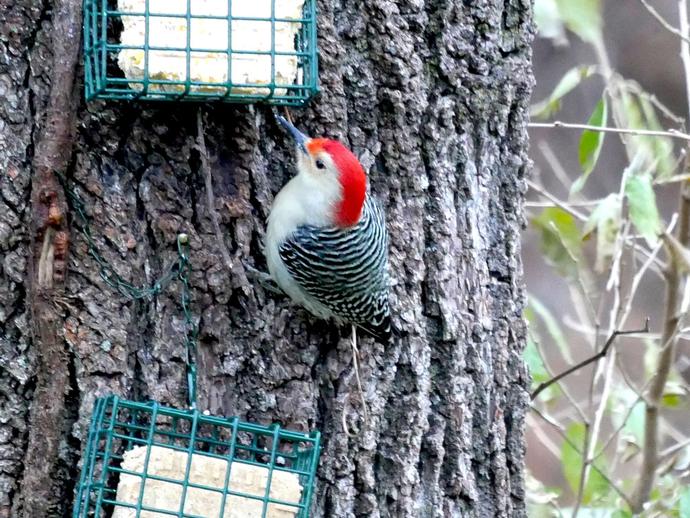
The red-bellied woodpecker (Melanerpes carolinus) is one of our most beautiful woodpeckers ...
December 8, 2020
The red-bellied woodpecker (Melanerpes carolinus) is one of our most beautiful woodpeckers, and it can be found pretty commonly across the eastern half of the United States. You might be tempted to call this a red-headed woodpecker, given that its most prominent feature is its bright red head (which is especially striking in the males of the species, such as this one). However, the red-headed woodpecker (Melanerpes erythrocephalus) looks quite different and is harder to find in southwest Virginia. For what it's worth, red-bellied woodpeckers do have a faint reddish tint on a small part of their bellies. If you squint. Red-bellied woodpeckers mainly eat insects hiding under the bark of trees, but they'll also eat fruits, ...
Thank you to all of our members for the tremendous support you have provided the museum during ...
December 7, 2020
Thank you to all of our members for the tremendous support you have provided the museum during this unprecedented year! Your support has allowed the museum to meet its mission and continue providing and expanding our science education programming for curious minds of all ages. If you would like to join or renew your membership today, the museum's website offers you a quick and easy way of being an important part of the VMNH family! Join or renew online today at www.vmnh.net/membership! More information about VMNH Discovery Kits can be found at: www.vmnh.net/education/vmnh-discovery-kits!
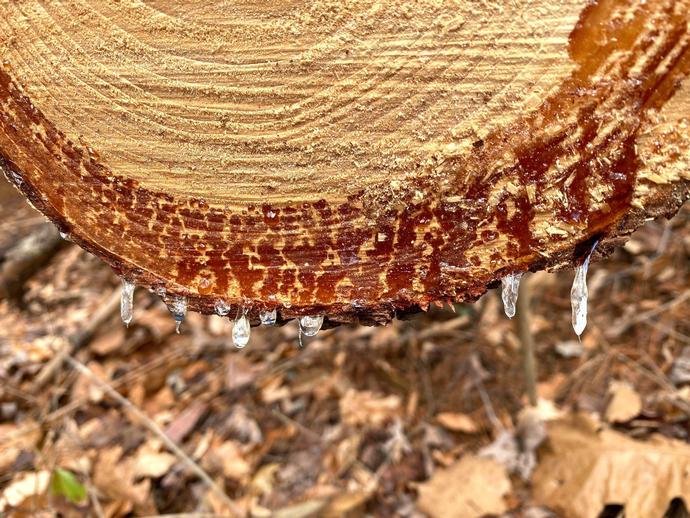
Ben here with the Monday edition of #BenInNature!
December 7, 2020
Ben here with the Monday edition of #BenInNature! Here we see a pine tree that I had to cut up after it fell across my road, one of approximately seven million such pine trees that have fallen across my road over the last couple years (it feels like that many, anyway). You'll notice the gooey resin dripping from the cut trunk, and like me, you might wonder why pine trees produce this sticky stuff! First things first, resin is not the same thing as sap. Pine trees also produce sap, but it's a thin, watery substance. While trees use sap to circulate water and nutrients through the entire tree, sort of like how our bodies use blood, resin is a different substance that fulfills a different purpose. If you cut a branch off a ...
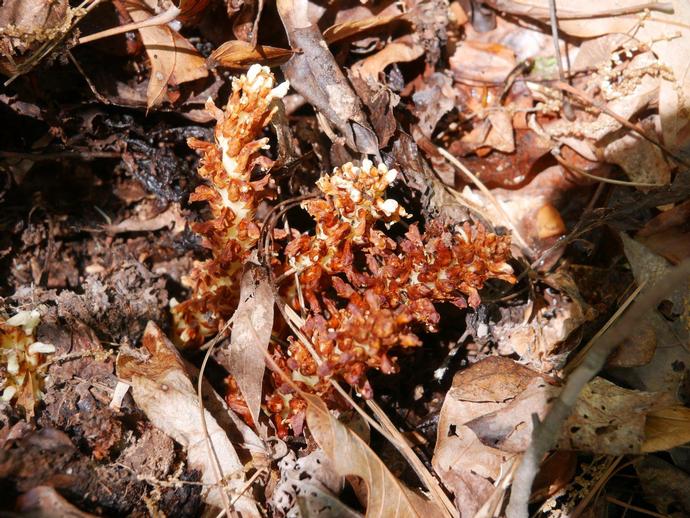
We're reaching into the archives for today's #BenInNature update!
December 6, 2020
We're reaching into the archives for today's #BenInNature update! The following post was originally published on April 22, 2020. As little kids, we're taught that plants have a green pigment called chlorophyll that absorbs sunlight and converts it into energy. While that's true for most plants, there are actually about 3,000 plants around the world that don't rely on the sun to get their energy. One of several examples that you can find in the woods here in southwest Virginia is Conopholis americana, also known as cancer root, squaw root, or bear corn. This plant doesn't have chlorophyll; instead, it's a parasitic plant that attaches to the roots of oak trees and beech trees, producing small suckers that leech ...
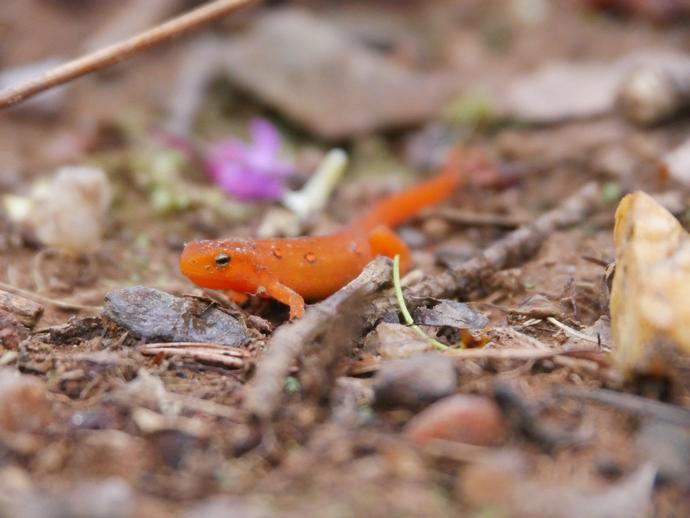
We're reaching into the archives for today's #BenInNature update!
December 5, 2020
We're reaching into the archives for today's #BenInNature update! The following post was originally published on April 21, 2020. The eastern newt Notophthalmus viridescens is fairly common, but its life cycle is anything but. These newts start their lives as brownish-green aquatic larvae with gills. After about three months, they turn bright reddish-orange, emerge onto land, and shed their gills. During this terrestrial stage of life, they are known as "red efts" (the two pictured eastern newts are both red efts). During this time, red efts will wander as far as their tiny legs can carry them as they seek out a new pond to call home. After two or three years, when the eft finds a new pond, its bright colors begin to fade ...
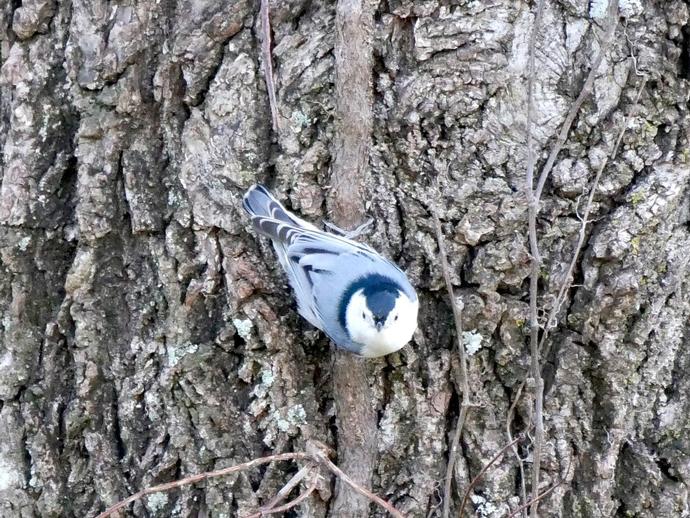
The white-breasted nuthatch (Sitta carolinensis) is an agile little bird that you've probably ...
December 4, 2020
The white-breasted nuthatch (Sitta carolinensis) is an agile little bird that you've probably seen creeping up and down the trunks of trees, especially if you have a suet feeder mounted on a tree (like my suet feeder, which disappeared mysteriously the other day; I'm assuming a particularly stout squirrel dragged it home for a trophy). White-breasted nuthatches can be found throughout most of the U.S. and into parts of Canada and Mexico. There are nine different subspecies of white-breasted nuthatch, although the ones we find in Virginia (Sitta carolinensis carolinensis) is the most widespread and can be found throughout most of the east coast and into the midwest. Once you get to the west coast and into Mexico, the ...
In this episode of "Museum Minute" ...
December 3, 2020
In this episode of "Museum Minute", VMNH Educator Terri Robertson is inside the museum's Lee & George W. Lester, II How Nature Works gallery to highlight a wild turkey display! SPECIAL OFFERING! Wild about turkeys? Come join the VMNH education team today (Friday, December 4, 2020) for a special activity table inside the museum's exhibit galleries featuring a variety of wild turkey specimens! This special offering is included in the cost of general admission and is available anytime today between 10 am and noon, as well as 1 to 3 pm! ABOUT MUSEUM MINUTE "Museum Minute" is a series of weekly videos produced by VMNH educators that highlights specimens and displays residing inside the museum's exhibit galleries.
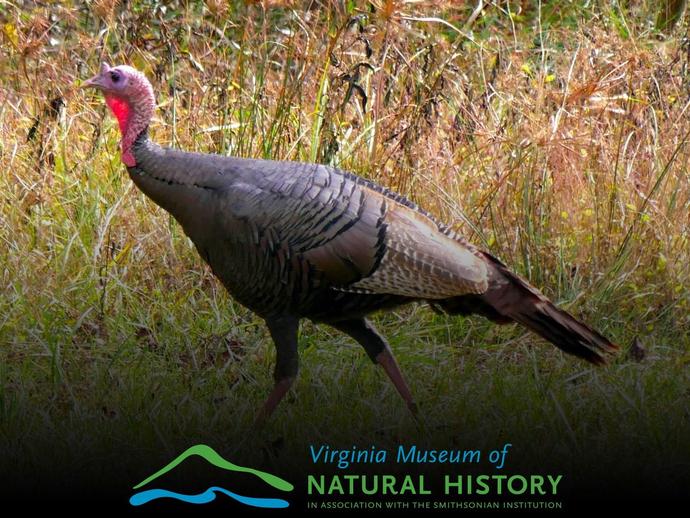
Wild about turkeys?
December 3, 2020
Wild about turkeys? Come join the VMNH education team tomorrow (Friday, December 4) for a special activity table inside the museum's exhibit galleries featuring a variety of wild turkey specimens! This special offering is included in the cost of general admission and is available anytime tomorrow between 10 am and noon, as well as 1 to 3 pm!
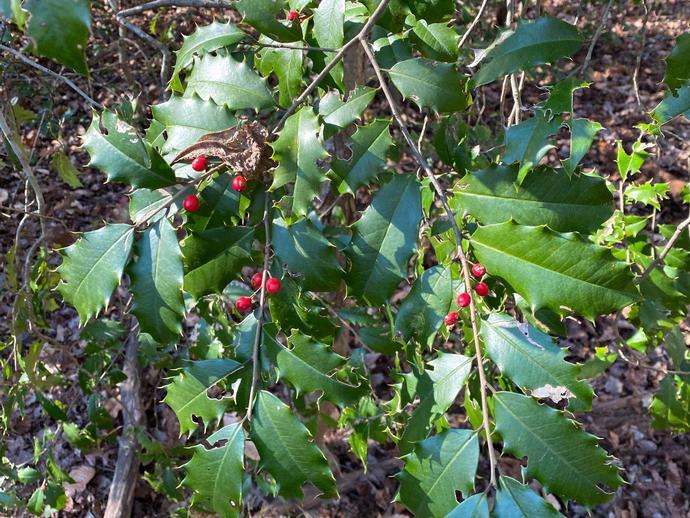
Ben here with the Thursday edition of #BenInNature!
December 3, 2020
Ben here with the Thursday edition of #BenInNature! With its stiff, pointy leaves and bright red berries, the American holly (Ilex opaca) is one of our easiest native trees to identify. American holly is native to most of the southeastern United States, but it can be found outside its natural range due to its popularity as an ornamental plant. There are more than 1,000 different holly cultivars (varieties produced through selective breeding). Some cultivars have larger berries, others have yellow berries, and one cultivar called "Cobalt" can withstand temperatures as low as -25 F! In the wild, American holly averages between 33-66 feet in height but can reach nearly 100 feet tall! All the trees in the holly family are ...
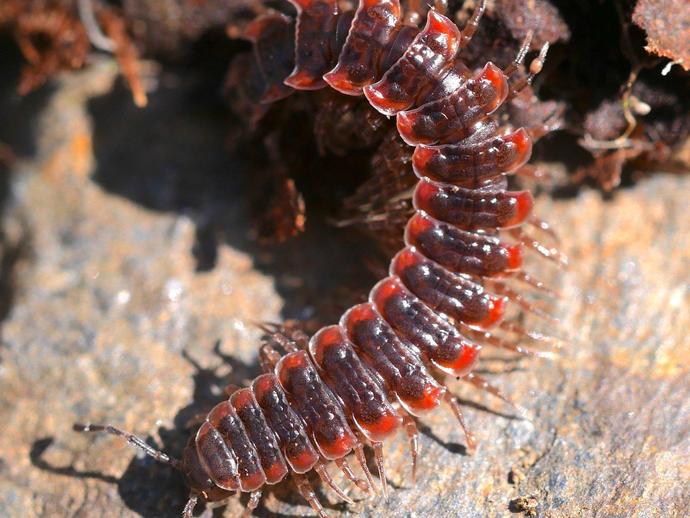
Ben here with today's edition of #BenInNature!
December 2, 2020
Ben here with today's edition of #BenInNature! There is an enormous diversity of millipedes in the Appalachians, and I have a hard time telling them apart. Fortunately, I can always pester Dr. Jackson Means, VMNH's resident myriapodologist (millipede expert)! According to Dr. Means, this attractive little fellow is Pseudopolydesmus canadensis. These millipedes are found in central to northern Appalachia and in the northeast, and they're often found at higher elevations. There are eight to twelve known species in the genus Pseudopolydesmus, and the genus itself belongs to the order Polydesmida, also known as the "flat-backed" millipedes. Because, well, look at 'em. These little guys are commonly found in leaf litter, and ...
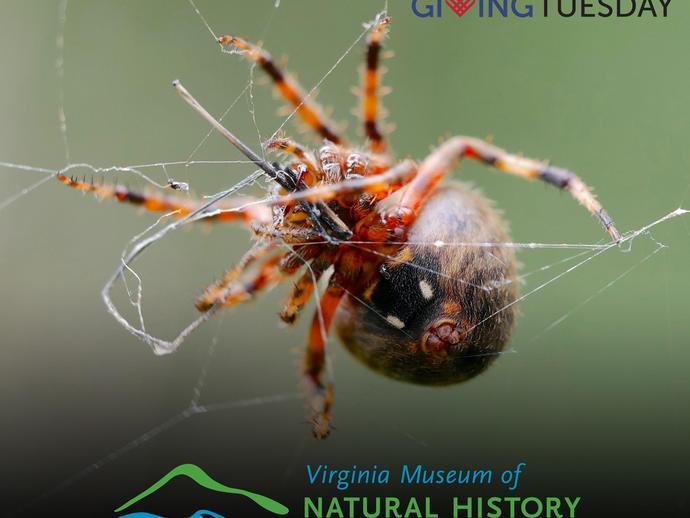
#GivingTuesday is a global generosity movement ...
December 1, 2020
#GivingTuesday is a global generosity movement, unleashing the power of people and organizations to transform their communities and the world! Today, we ask that you consider supporting the Virginia Museum of Natural History Discovery Fund in an effort to help VMNH expand its scientific research, educational programming, and museum exhibits throughout the Commonwealth and beyond! Giving today will help us continue telling the awe-inspiring stories of our natural world for years to come! www.vmnh.net/donate
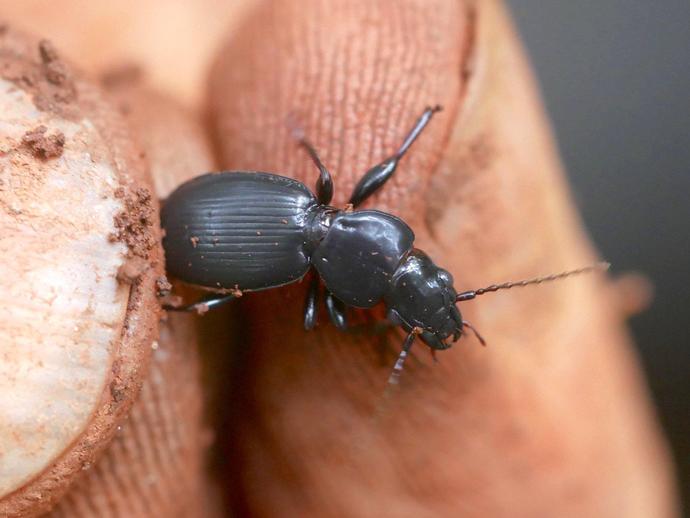
It's time for the Tuesday edition of #BenInNature!
December 1, 2020
It's time for the Tuesday edition of #BenInNature! You might not be seeing too many insects these days, but many of them are still around, hiding beneath the leaf litter! According to VMNH Research Associate and Professional Ground Beetle Enthusiast Curt Harden, this is Cyclotrachelus iuvenis (and it's one of his favorite ground beetles). According to Harden, this species is only found in southeastern West Virginia, western Virginia, and neighboring parts of North Carolina. I've found two on my property over the last couple of months, and I spotted the second one just a couple of weeks ago while digging through leaf litter. There are 45 known species in the genus Cyclotrachelus, all of which are found east of the ...
Archives
2026
2025
2024
2023
2022
2021
2020
2019
2018
2017
2016
2015
2014
2013
2012
2011
2010
2009
2008

Please Visit Us Soon
Hours:
Tuesday - Saturday: 10am - 4pm
Sunday: Noon to 4pm (Memorial Day Weekend through Labor Day Weekend only)
Monday: Closed
Admission:
$12 for ages 18-59
$6 for ages 3-17, seniors 60+, and college students
FREE for children under 3, museum members, members of ASTC Passport participating institutions, and EBT cardholders
My 4 year old son loves going to the museum. The exhibits are educational, interactive and kid-friendly.
”

 Hours & Admissions
Hours & Admissions Directions
Directions